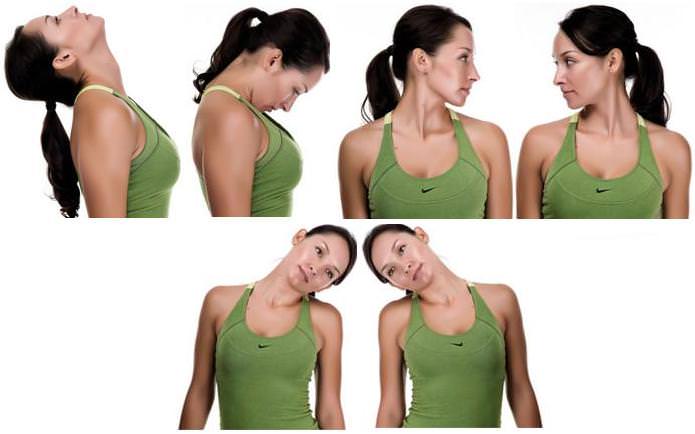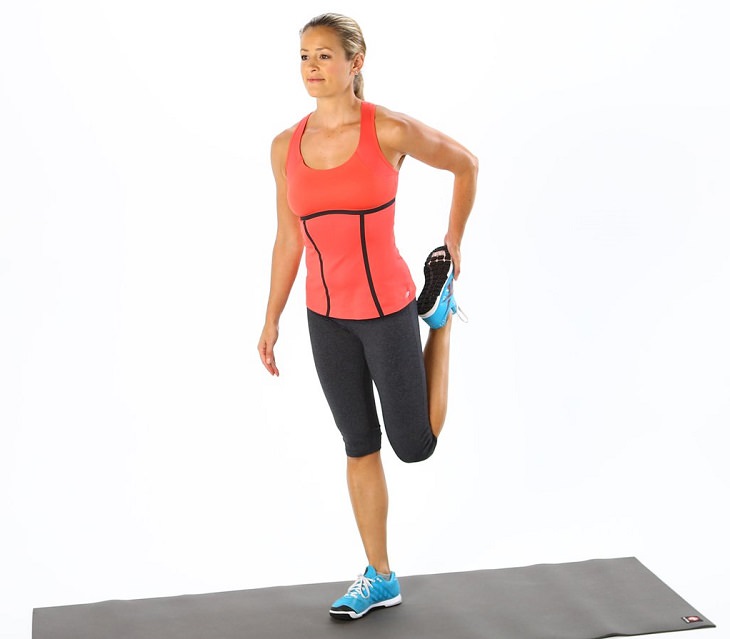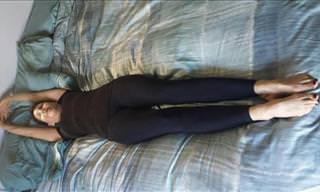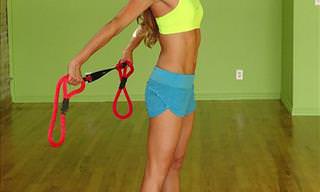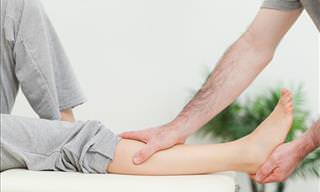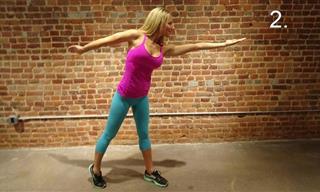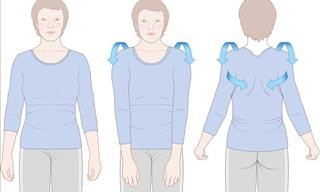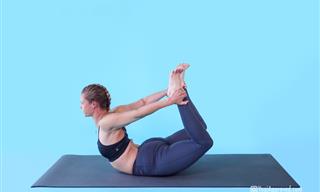It's said that a person's age can be determined by their flexibility and range of motion. But, as one might expect, if you don't work your muscles to enhance your flexibility, then you'll most likely lose it. So if you spend most of your day sitting down, or inactive, take some time out of your schedule (be it at work or otherwise) to stretch a little. If you're over the age of 40 here are 6 simple, but effective stretches you should try. Aim to practice the stretches below at least 4 to 5 times per week - you'll get your flexibility back in no time!
1. Shoulder Rolls
Do it: To maintain and increase your range of motion in your arms and upper back. This will enable you to reach for things on high shelves and improve in sports like golf or tennis. Shoulder rolls also help diffuse tension and open up your ribs for easier breathing.
Here's how: Slowly, roll your shoulders forward in big circles. Repeat 10 times and then reverse the motion, repeating for a further 10 times.
Practice with caution: If you feel any trembling, stop for the day and try again the next day. You can also reduce the number of repetitions and build up to 10 as you go along.
2. Trapezius Stretches
Do it: These large, triangle-shaped muscles tie the top of your back, your shoulders and the back of your neck together. Spending a lot of time working on a computer or driving causes these muscles to get pretty tight, leading to neck pain or headaches.
Here's how: After doing the shoulder rolls, tuck your chin into your chest. Tilt your head slowly to the left and hold it for up to 30 seconds, then slowly tilt to the right. You should feel a deep stretch in your trapezius muscles.
Practice with caution: If you feel burning in your muscles, you may be stretching too hard.
3. Neck Stretches
Do it: Neck stretches release tension, maintain flexibility and increase strength. Doing neck stretches can help you avoid painful strains or a slouched posture that affects many of us as we grow older.
Here's How: Start by looking straight ahead, keeping your shoulders square. Then move your neck up, then down. Next, turn your head to the left as far as you can and return to the starting position. Then turn your head far to the right. Now tilt your neck over to the side, ear to shoulder, then over to the other side. Engage and stretch all the planes of your neck.
4. Shoulder Reaches
Do it: Improve your range of motion in your shoulders enabling you to reach for overhead items and improve flexibility for sports and everyday tasks.
Here's How: Reach one arm across your chest. With your other hand grab the back of your reaching arm and lightly pull on it to assist the stretch. You should feel a deep stretch in the shoulder. Repeat on the opposite arm then repeat again, this time angling your arms slightly up or slightly down. These different angles will stretch different parts of your shoulder blades.
5. Quad Stretches
Do it: Your quadriceps, the large muscles on top of your thighs help you sit down as well as stand up without any assistance. They are used for many day-to-day activities and tend to get pretty tight if you spend most of your day sitting down.
Here's How: Reach back with your right hand and grab the top part of your right foot (use a chair or wall to maintain your balance if need be). Pull your foot toward your glutes (your bottom). The knee should be pointing straight down to the ground not off to the side. Meanwhile, keep your upper body and head square and try to engage your stomach muscles, helping you stretch the quad from both top and bottom. Hold for 15 to 30 seconds, then repeat on the other leg.
6. Glute Stretches
Do it: Sciatic nerve pain or lower back pain could result from unused muscles and tendons in your buttocks.
Here's How: Sit on a mat. Keep your legs stretched out, straight in front of you. Cross your right foot over your left leg. Your right foot should be resting on the ground, next to your thigh. Your left leg straight out in front of you and your right knee pointed at the ceiling. Twist your upper body to the right, resting the back of your left arm against the outside of your right knee. Keep twisting your upper body pushing it against your knee until you feel a deep, but comfortable, stretch in your glutes. Hold for a couple of seconds then switch.
Bonus: Practice Pilates
To work your lower back, Pilates will help reduce low back pain and improve functionality in your lower spine. Pilates is best practiced with a trained practitioner, so do attend a group class nearby.
Bonus: Do Yoga
Like Pilates, yoga has been found to improve flexibility and banish muscle pain. It also helps stimulate pressure receptors in your skin, helping to slow down your heart rate and your nervous system. Practice these seven chair yoga poses.
Source: prevention
 Go to BabaMail
Go to BabaMail



